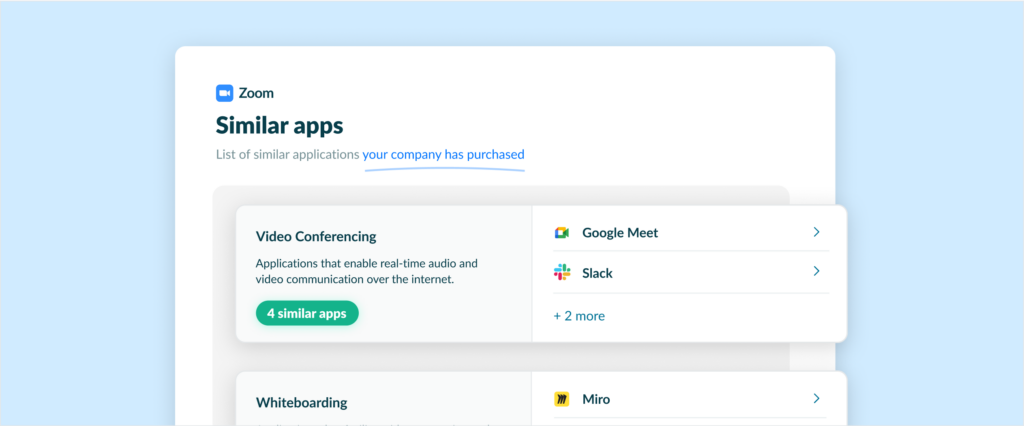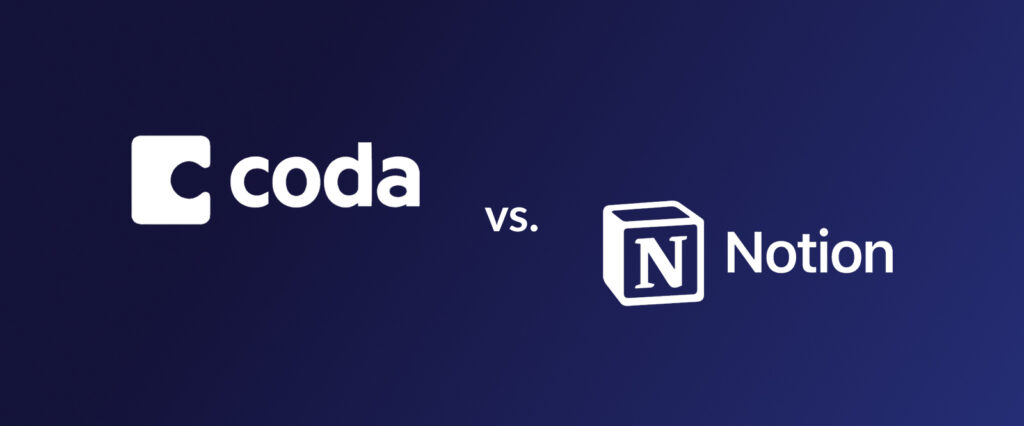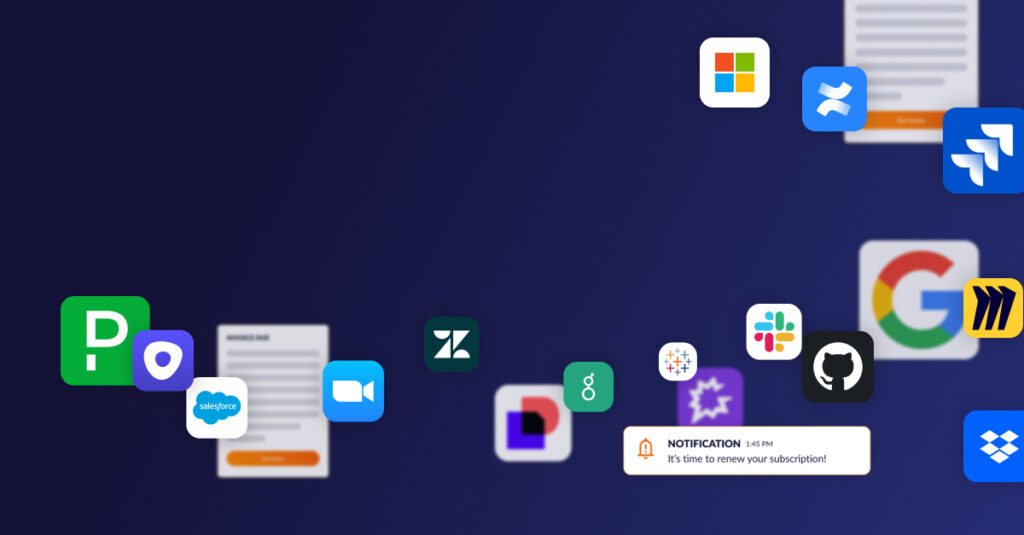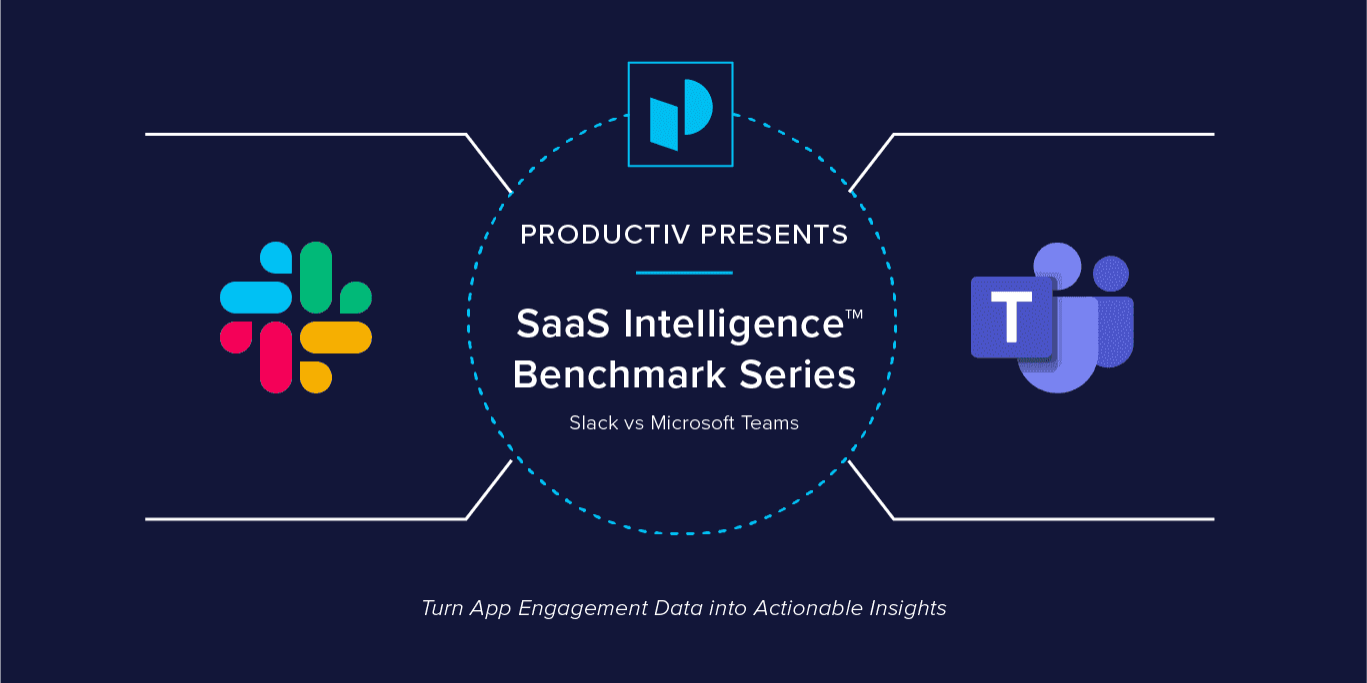
SaaS Intelligence Benchmark Series: Slack vs. Microsoft Teams
By Kristin Crosier and Jin Baik
We’re big data wonks here at Productiv, and we always get questions from customers about understanding how employees engage with different apps. One of the top app comparisons our customers want to see is Slack vs. Microsoft Teams, particularly in light of the shift toward hybrid and remote work.
Many of our customers have both Slack and Teams — but don’t necessarily know how employees and teams are actually using the two apps. Alternatively, some customers already have Teams in their application portfolio (because they’ve purchased a Microsoft 365 bundle) and want to know whether paying for Slack is worth it.
Using SaaS Intelligence™, we took a deep dive into how Productiv customers are using Slack vs. Teams — and the results may surprise you!
Slack vs. Microsoft Teams: The background
Eight years ago, a little app with a hashtag for a logo completely upended the work collaboration space. In short order, Slack has become the go-to platform for startups and tech-savvy organizations — and other companies noticed. One of those companies was Microsoft, which released Teams in 2017 as a direct competitor to Slack.
On paper, Microsoft had some big advantages. Companies already knee-deep in its products seemed like natural adoptees, and Microsoft also tried to increase adoption by exclusively bundling Teams with its Microsoft 365 suite.
According to Microsoft’s most recent user data, Teams has a higher number of users compared to Slack. However, Slack has questioned how Microsoft determines its user numbers and whether that data is accurate.
Also at stake is the (perhaps more important) question of which platform has higher engagement among users — and that’s where our data comes into play.
First, here’s how we analyzed engagement
For this data deep dive, we looked at an anonymized subset of data from companies that use Productiv. That amounted to 175,000 engaged Slack users and 70,000 engaged Teams users, and we analyzed usage across a period of 60 days (in July and August of 2021). Our analysis is based on the data our customers make available to Productiv through integrations with Slack and Teams.
We define “engagement” as occurring when a user logs in and performs an action within the app. For the purposes of this comparison, we analyzed:
- Engagement with each application, as defined by logging in and taking some sort of action (such as sending a message), across a set of days: 1 day, 7 days, 30 days, and 60 days
- How engagement varied across specific teams
- The distribution of engagement percentages across companies
- How the features of each application were being used
With that out of the way, let’s dive in. First up: let’s talk about overall engagement across Slack and Teams.
Slack leads across regular engaged users
During each of the time frames we examined, Slack has higher engagement — with more than 2x daily user engagement compared to Teams.
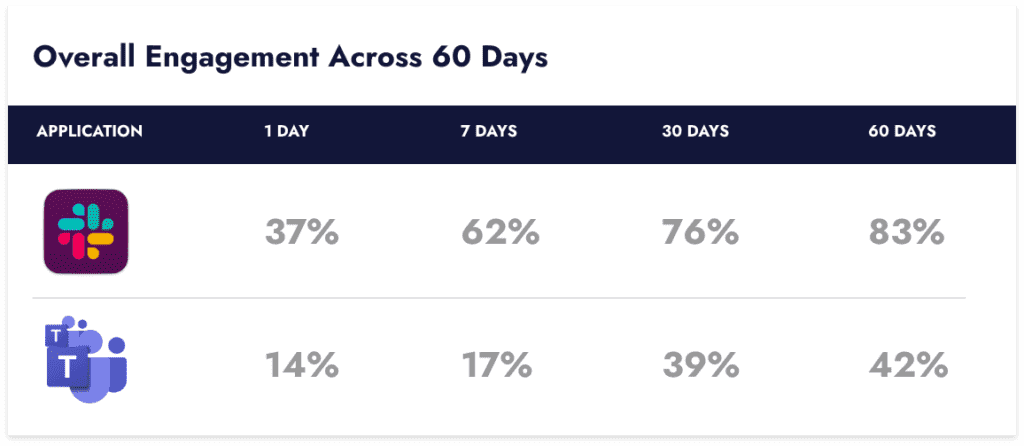
Slack’s significantly higher engagement across every time frame suggests the tool is more deeply embedded in the work habits of its users than Teams.
Based on the data, we’d also hypothesize that companies who use Teams may rely more on video meetings for collaboration while companies who use Slack rely more on chat.
Slack has more engaged chat users, while Teams prevails for meetings
When we drilled down into what engagement looked like at the feature level across the two apps, the story became more interesting. Here are our key findings across private messages, group messages, and meeting attendance:
- Private messages: Over 30 days, 89% of engaged Slack users interacted with private messages compared to 60% for Teams
- Group messages: 92% of engaged users in Slack used the group messaging feature over 30 days, versus just 11% of engaged Teams users
- Meeting attendance: 62% of engaged Teams users attended a meeting over the 30 days, whereas only 13% of engaged users attended a meeting through Slack
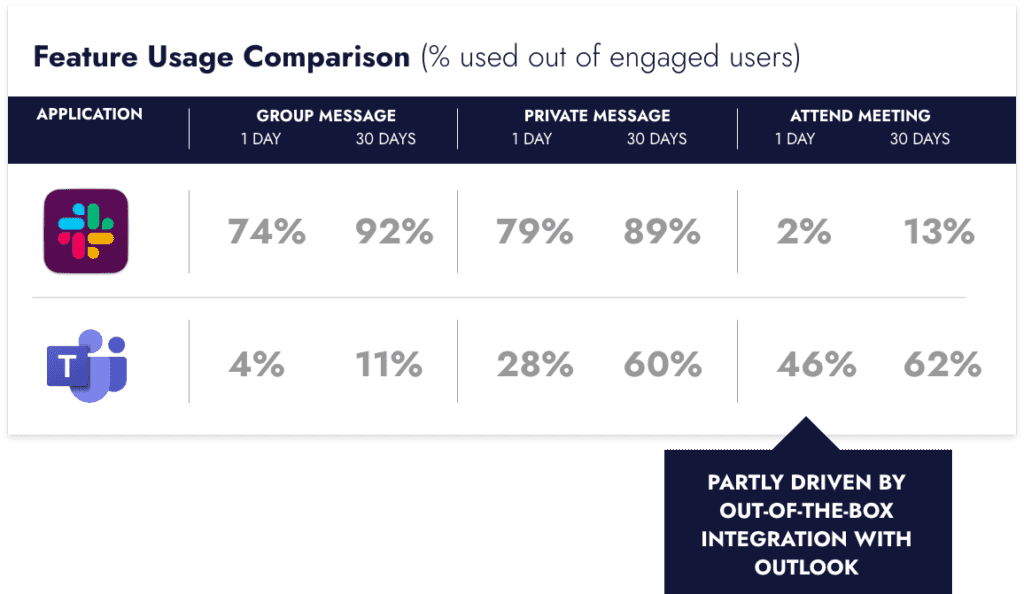
Microsoft Teams’ out-of-the-box integration with Outlook may help explain why meeting attendance is significantly higher for Teams. Microsoft has also heavily advertised the Teams video conferencing feature. Conversely, many Slack users aren’t fully aware of the app’s built-in meeting functions or may already be regular users of Zoom.
Looking again at the low percentage of Teams users who used the group message feature, the data further supports our hypothesis that Teams users are likely choosing meetings over chat interactions for collaboration.
Slack engagement is high across all departments
Another area where there are considerable differences between the two tools is in usage among different departments. Looking through the lens of how teams are using Slack vs. Teams, we again see higher engagement among Slack users.
As you can see in the graphic below, Slack leads across the board in engagement over 30 days.
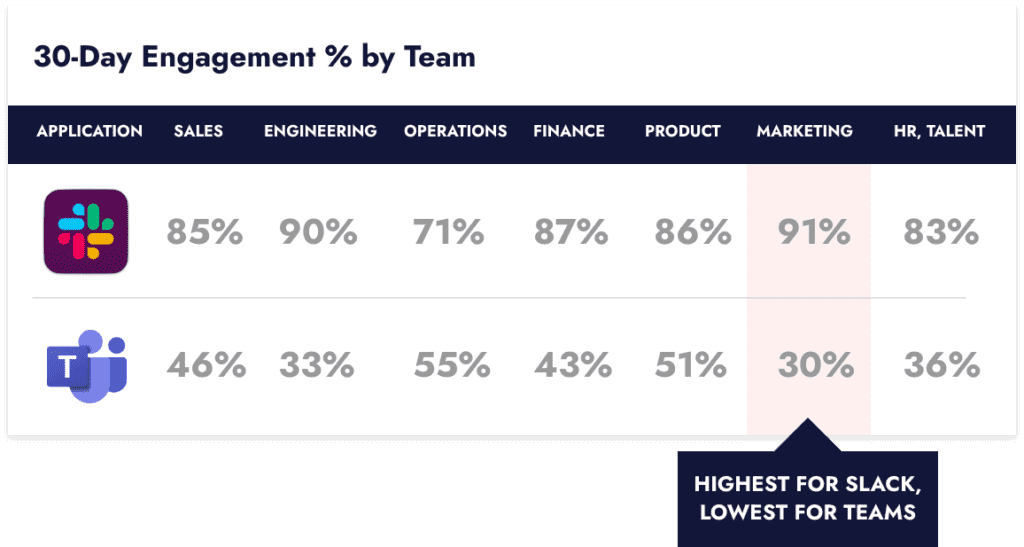
A few numbers stand out from these results, beginning with the high adoption of Slack among Marketing and Engineering. Teammates in these groups tend to work very collaboratively and may rely heavily on chat versus other forms of communication (such as email or meetings).
On the Teams side, the two most-engaged departments — Operations and Product — have just above 50% engagement across the 30-day period. That’s a sizable gap compared to Slack engagement across all teams, which indicates Teams is used less consistently as a form of communication and collaboration.
In summary: Slack vs. Teams
While Slack and Teams have similar capabilities, adoption of the former is uniformly high whereas Teams adoption is decidedly mixed. This suggests that for many companies — even those who utilize other Microsoft products — paying for Slack may be a worthwhile investment.
However, engagement will vary for each company, so what holds true for others may not be the case for your company. It’s also worth keeping in mind that 1) part of Slack’s high engagement seems to stem from the tool being deeply embedded into company culture, and 2) Teams has a sizable advantage in engagement when it comes to the video conferencing feature.
Whether you use Slack or Teams (or both!), Productiv’s SaaS Intelligence gives you actionable insights into how employees are engaging with your SaaS application portfolio. Our feature-level analytics can help you pinpoint ways to increase app adoption, drive employee usage and engagement, and ultimately improve employee satisfaction.
Looking for more information on how Slack can help drive collaboration? Check out our eBook What 4 Million Slack Messages Tell Us About Collaboration.
About Productiv:
Productiv is the IT operating system to manage your entire SaaS ecosystem. It centralizes visibility into your tech stack, so CIOs and IT leaders can confidently set strategy, optimize renewals, and empower employees.
Learn more today
